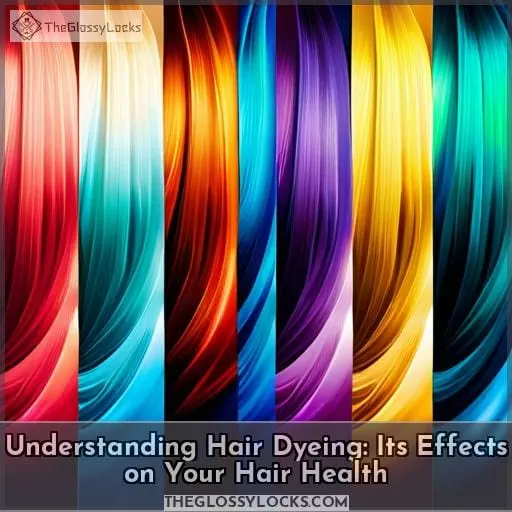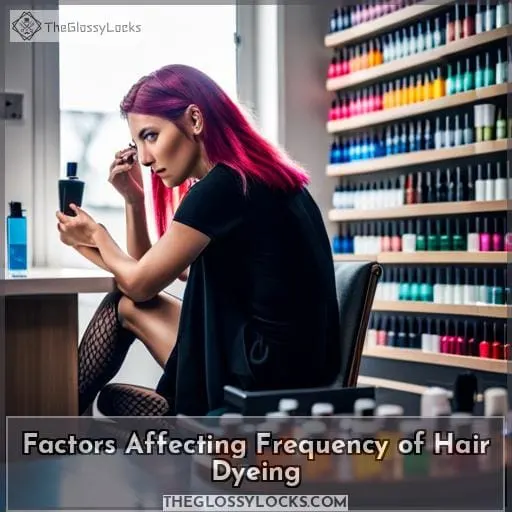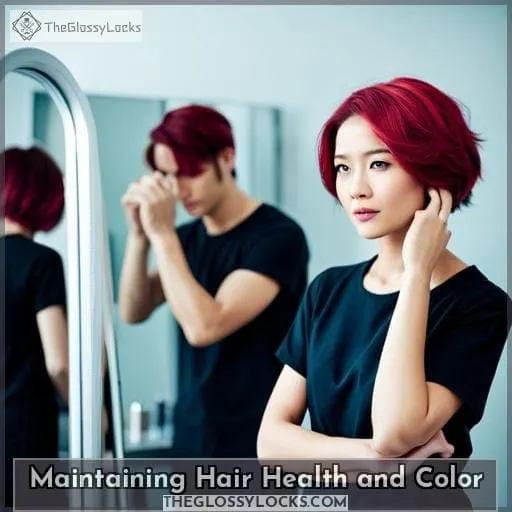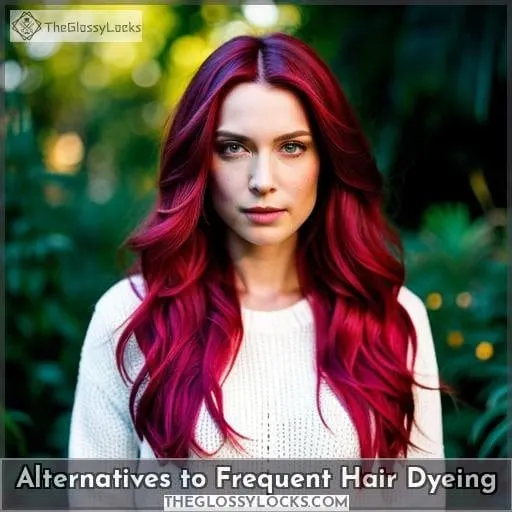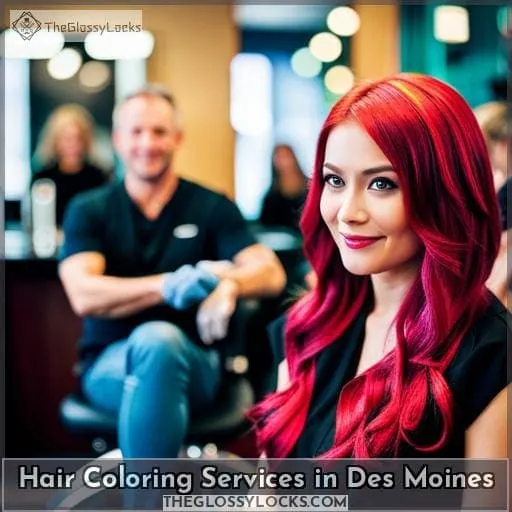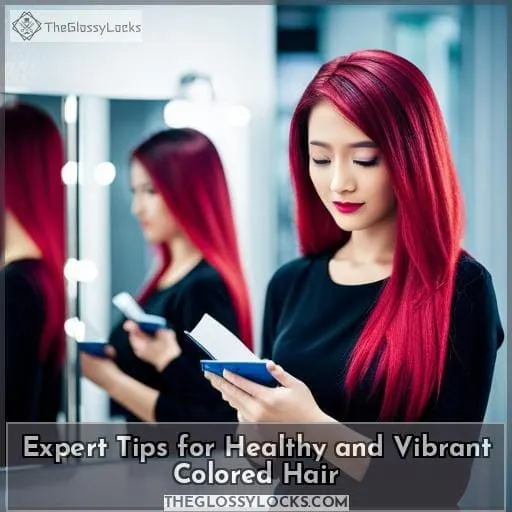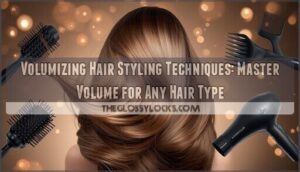This site is supported by our readers. We may earn a commission, at no cost to you, if you purchase through links.
Dyeing your hair can be a great way to express yourself and enhance your look, but it’s important that you do it safely. Knowing how often you should dye your hair is essential for keeping it healthy and vibrant in between coloring sessions.
With the right products and professional advice, you can find out exactly how often to dye your hair depending on factors such as color type or growth rate.
Table Of Contents
- Key Takeaways
- Understanding Hair Dyeing: Its Effects on Your Hair Health
- Factors Affecting Frequency of Hair Dyeing
- Maintaining Hair Health and Color
- Alternatives to Frequent Hair Dyeing
- Hair Coloring Services in Des Moines
- Expert Tips for Healthy and Vibrant Colored Hair
- Frequently Asked Questions (FAQs)
- Conclusion
Key Takeaways
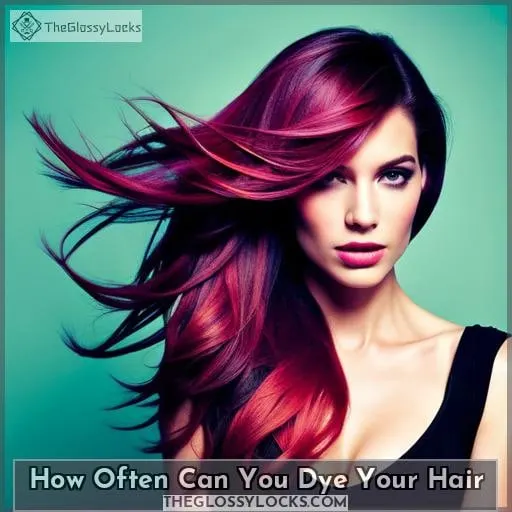
- The frequency of hair dyeing depends on factors such as hair type, porosity, and growth rate.
- It is important to choose the right type of dye and use high-quality products specifically designed for colored hair to minimize damage.
- Deep conditioning, heat protection, and color gloss treatments are crucial for maintaining healthy and vibrant hair.
- Consulting with professionals and conducting patch tests before dyeing hair can help prevent complications and ensure safety and efficacy standards.
Understanding Hair Dyeing: Its Effects on Your Hair Health
To keep your hair looking healthy and vibrant, it’s important to understand the effects of dyeing on your hair. Temporary dye can be used as often as desired, while semi-permanent dyes should only be used once a week.
Demi-permanent dyes can last for up to 20 washes, making them ideal for maintaining color every 6 to 8 weeks. Permanent dyes are the longest lasting but also cause the most damage. They should only be done every 6-8 weeks or longer if possible.
Choosing a shade within three shades of your natural hair color is easier on fragile, color-treated strands that may need extra care between coloring sessions. To protect against damage from heat styling tools, use heat protection products such as Function Of Beauty’s custom haircare range, which is sulfate and paraben-free.
Remember to deep condition with moisturizing products like leave-in conditioners and regular deep treatments to help preserve dyed locks.
Professional advice is always recommended when dealing with delicate matters such as this one, so don’t hesitate to consult an expert before taking any action regarding your precious tresses!
Factors Affecting Frequency of Hair Dyeing
When it comes to determining how often you can dye your hair, there are a few key factors that come into play. Firstly, the type and color of your hair will affect the frequency of dyeing since darker colors tend to fade quicker than lighter shades.
Secondly, what type of dye you use – such as permanent or semi-permanent – also determines how quickly it will need touching up.
Lastly, everyone’s individual rate for new growth impacts when they should be reapplying their chosen hue. Those with faster growing locks may require more regular appointments in order to maintain even coverage throughout their strands.
Hair Type and Color
Hair type and color can have a significant impact on how you care for your hair. It is important to choose the right shades and products to protect your hair from heat damage. When selecting between semi-permanent, demi-permanent, or permanent hair dyes, keep your growth rate in mind.
Temporary dyes are best for frequent use, while bleaching should be avoided. To maintain the vibrancy of your chosen hue, it is necessary to use color-safe shampoos.
Type of Hair Dye
Experience the vibrancy of color with semi-permanent, demi-permanent, or permanent hair dyes tailored to your individual needs. Temporary dye can be used most often while permanent will last the longest and cover gray hair.
Hair porosity affects how long you should wait between dye jobs; low-porosity requires longer times and high developer, whereas high porosity does not need as much time. Color gloss keeps colors looking vibrant, while heat protectant and deep conditioning help keep color-treated hair healthy.
Hair Growth Rate
The frequency of how often you should dye your hair depends on a variety of factors, such as the type and color used, as well as your own unique hair growth rate. To protect colored locks from damage, use heat-protective products and deep conditioners between sessions to keep them nourished.
Gray hairs require permanent dye for a lasting color change, while demi-permanent dyes can last up to 24 shampoo washes.
Maintaining Hair Health and Color
Maintaining healthy hair starts with understanding the importance of using color-safe products and prioritizing conditioners. It is also crucial to take care and protect your hair from heat damage by investing in quality styling tools.
This is key for preserving the vibrancy of dyed hair, as it’s essential not to over-process or dye too frequently.
Importance of Color-Safe Products
Using color-safe products is essential for protecting hair and achieving lasting dye results. The porosity of hair determines the time needed to apply dyes, while the frequency of bleaching should be monitored.
To maintain vibrancy, color gloss can be applied, and heat protectant can defend against damage caused by styling tools. It is recommended to use color-safe shampoos, deep conditioners, and temporary hair dyes instead of demi-permanent ones for frequent use.
Prioritizing Conditioners
To keep your hair looking vibrant and healthy, it is important to prioritize the use of conditioners. Hair experts recommend using heat protection before styling, as well as deep conditioning for extra nourishment.
A paraben-free shampoo with a rinse-off conditioner should be used to maintain low-level peroxide dyes, while color gloss helps retain color longevity for demi-permanent dyes.
Protecting Hair From Heat Damage
Protect your color-treated hair from heat damage by investing in a quality heat protectant and avoiding styling tools when possible. Hair care should include deep conditioning, using color-safe products, and Function of Beauty’s custom haircare range to maintain the hair’s health while protecting its porosity from harsh chemicals.
Heat styling should be done sparingly and with caution, as demi-permanent dyes can survive up to 24 shampoo washes.
- Invest in a quality heat protectant
- Avoid styling tools when possible
- Use color-safe products and deep conditioner
- Utilize Function of Beauty’s custom haircare range
Alternatives to Frequent Hair Dyeing
Maintaining the health of your hair while achieving your desired color can be a delicate balance. However, if you find yourself dyeing too frequently and noticing damage or dryness, there are alternatives to consider.
Natural dyes like henna or indigo offer a gentler approach to coloring but may require more effort for results. Hair glossing treatments can add shine and enhance natural tones without altering the color dramatically.
Heat alternatives such as air-drying and heat protectants help minimize damage from styling tools on already colored hair.
Custom formulas like Function of Beauty’s sulfate-free products cater specifically to individual needs, including demi-permanent options for less frequent touch-ups on low-porosity hair types and semi-permanent colors for high-porosity strands that absorb dye easily but fade quickly.
| Alternatives |
|---|
| Natural Dyeing |
| Hair Glossing |
| Heat Alternatives |
| Color Care |
| Custom Formulas |
Hair Coloring Services in Des Moines
If you’re looking for a hair coloring service in Des Moines, look no further than professional salons to get the perfect hue. With color care practices, maintenance regimens, and hair growth habits tailored to your needs, they will help keep your mane looking its best.
Certified stylists can also provide professional advice on long-term natural alternatives such as demi-permanent dyes.
- Consult with professionals first before using any products on black hair. This helps ensure that dye is applied correctly and safely without damage or breakage occurring later down the line.
- Use high-quality products that are specifically designed for colored locks.
- Get regular trims every 6 weeks or so in order to keep split ends at bay and maintain healthy length retention over time.
These simple steps will help ensure the longevity of your chosen hue while still maintaining healthy strands! Additionally, pay attention to other important aspects of keeping your tresses strong.
Expert Tips for Healthy and Vibrant Colored Hair
For healthy and vibrant colored hair, following expert tips can help you make the most of your dye job. Color-safe products are a must to protect color-treated and fragile hair from damage. Deep conditioning moisturizes the strands, while a heat protectant prevents further breakage when styling with hot tools.
A color gloss treatment keeps your locks looking shiny and vibrant between dyes by adding an extra layer of protection for longer-lasting results.
It’s also essential to consider your hair porosity when choosing dye upkeep frequency. Demi-permanent dyes may be suitable for those with high-porosity hair, whereas low-porosity requires more extended dye time or higher developer concentration.
Frequently Asked Questions (FAQs)
How do I choose a hair dye that is right for me?
When choosing a hair dye that is right for you, it is important to take into account your natural hair color and porosity. It is also important to research different brands and types of hair dye to ensure that they meet safety and efficacy standards.
If you are unsure about which shade to choose or how to maintain your hair after dyeing, it is recommended that you consult with a professional for guidance.
How can I make my hair color last longer?
To make your hair color last longer, use color-safe products and wait 8-10 weeks between dye jobs. Protect your hair from heat-styling tools with a heat protectant and deep condition it regularly. Choose a color within three shades of your natural hair color to minimize damage.
Are there any side effects to dyeing my hair?
Dyeing your hair can result in side effects such as itching, redness, and dryness. The use of PPD in black henna can also cause allergic reactions. To prevent any complications, it is advisable to opt for a reputable brand and conduct a patch test before dyeing your hair.
Can I dye my hair if I have damaged hair?
If you have damaged hair, it is best to avoid dyeing your hair until it has fully recovered. Dye can worsen the damage and lead to breakage. Wait until your hair is healthy again before considering a new color.
Is it possible to dye my hair at home or should I go to a salon?
Looking to dye your hair? It is possible to do it at home, but going to a salon ensures the right color and proper application. Choose wisely for optimal results and less damage. Get ready for a new look! Using vivid imagery, this answer employs the rhetorical device of personification by treating the decision between at-home or salon dyeing as if it were an actual choice-making entity with agency.
Conclusion
In conclusion, it’s important to remember that moderation is key when it comes to hair dyeing. Know your hair type, select a color within three shades of your natural hair color, and use the correct type of dye for your hair.
Protect your hair from heat and use color-safe products and conditioners to keep it looking vibrant. If you desire a more permanent change, visit a professional. They can help you find the best solution for your hair and guide you to healthy, beautiful hair that will last.
So, take your time and care for your hair – you’ll be glad you did.

